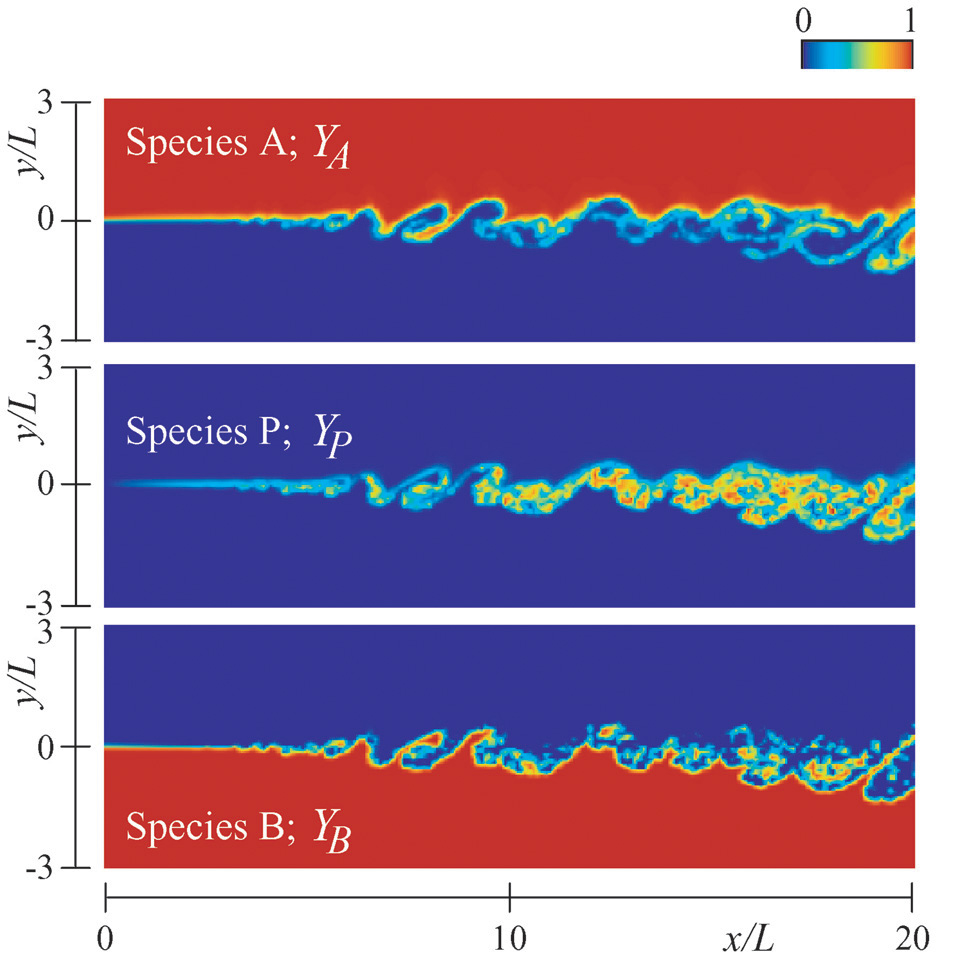Comprehensive List of Researchers "Information Knowledge"
Department of Complex Systems Science
- Name
- UCHIYAMA, Tomomi
- Group
- Information Visualization Group
- Title
- Professor
- Degree
- Dr. of Engineering
- Research Field
- Computational fluid dynamics / Multiphase flow engineering

Current Research
Advanced Numerical Simulation for Complex Flow Phenomena
The flow phenomena observed in nature and the flows handled in industrial equipment commonly have various spatial and temporal scales, and they exhibit nonlinear and complicated behavior. Multiphase flows and turbulent flows are typical examples. Our laboratory is devoted to conducting research on the modeling and numerical simulation of such flows.Most numerical simulations proposed thus far derive partial difference equations governing the flow and solve them by a finite difference method or a finite element method. Therefore, they are based on the Eulerian method. Our laboratory is earnestly promoting the development of the Lagrangian method, also known as the particle method. This method models the microscopic elementary process with the mesoscopic behavior of particles. It traces the behavior of small particles having a certain physical property, such as vorticity, concentration or temperature, to calculate directly the spatial and temporal development of flow. The method has been successfully applied to simulate a gas flow laden with small solid particles, a bubbly flow containing small gas bubbles, a diffusion of matter in free turbulent flow, a mixing layer with a single-step and irreversible chemical reaction, and a flow with a free surface.
The modeling and numerical simulation for complicated flow are attracting much attention in many fields, especially in bio-mechanics and micro-mechanics. Our laboratory is conducting numerical simulations of blood flow in cerebral aneurysms. The three-dimensional geometry of aneurysms is reconstructed from CT images, and the unsteady blood flow is analyzed. The simulation contributes markedly to clinical applications, such as in predicting the growth and rupture of aneurysms, because it reveals the blood flow and wall shear stress in an aneurysm.
Since the flow around a micromachine and the flow of etchant in a manufacturing process of semiconductors is of micrometric scale, it is difficult experimentally investigate such flows, leading to the need for such a numerical simulation method. As a liquid flow is exposed to a pressure lower than the saturated vapor pressure, very small gas bubbles existing in the liquid repeatedly expand and contract. We are also applying this method to predict such cavitating flow.
This numerical simulation method can indeed solve multi-scale and multi-physics problems. Its importance is growing in various fields, such as the engineering, environmental, and medical sciences. It is the aim of our laboratory to further develop this effective simulation method and perform advanced simulations.
The figure shows the instantaneous concentration fields for the species in a plane mixing layer with a single-step and irreversible chemical reaction. The flow direction is from left to right. Species A and species B flow at the high-speed side (y>0) and low-speed side (y<0) of a splitter plate, respectively, and they unite downstream of the plate. The simulation, using the particle method, successfully grasps the convection, diffusion, mixing, and reaction of species A and B and the production of species P. It is observed that species A and B are consumed in the mixing layer and that the species P is produced. The concentration of species P grows as the streamwise distance increases. Species A and B, however, still exist locally within the shear layer, suggesting that the reacting region has a finite thickness. Postulating that species A is a fuel and that species B is an oxidizer according to the standard gas burner problems, it is found that the combustion phenomena are favorably simulated.

Figure : Numerical simulation for a plane mixing layer with a single-step and irreversible chemical reaction
Career
- Tomomi Uchiyama received his degree of Dr. Eng. from the Graduate School of Engineering, Nagoya University in 1992, and he was a Research Associate of School of Information Sciences, Nagoya University. He is currently an Associate Professor of the EcoTopia Science Institute.
Academic Societies
- Japan Society of Mechanical Engineers
- Japanese Society for Multiphase Flow
- Turbomachinery Society of Japan
Publications
- Three-Dimensional Vortex Simulation for Particulate Jet Generated by Free Falling Particles, Chem. Eng. Sci., Vol. 61, pp. 1913-1921 (2006).
- Three-Dimensional Vortex Method for Gas-Particle Two-Phase Compound Round Jet, Trans. ASME, J. Fluid Eng., Vol. 127, pp. 32-40 (2005).
- Numerical Simulation for the Propulsion Performance of a Submerged Wiggling Micromachine, J. Micromech. Microeng., Vol. 14, pp. 1537-1543 (2004).








